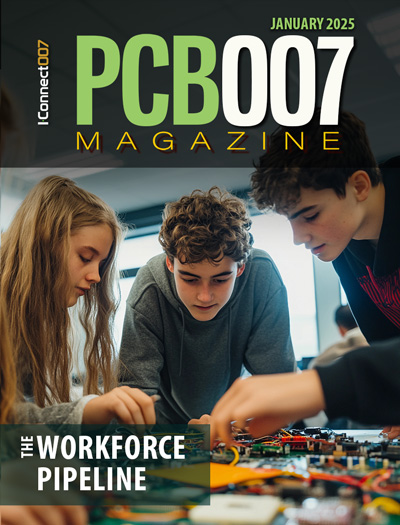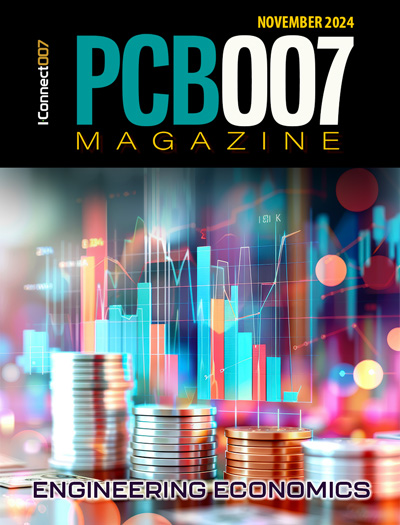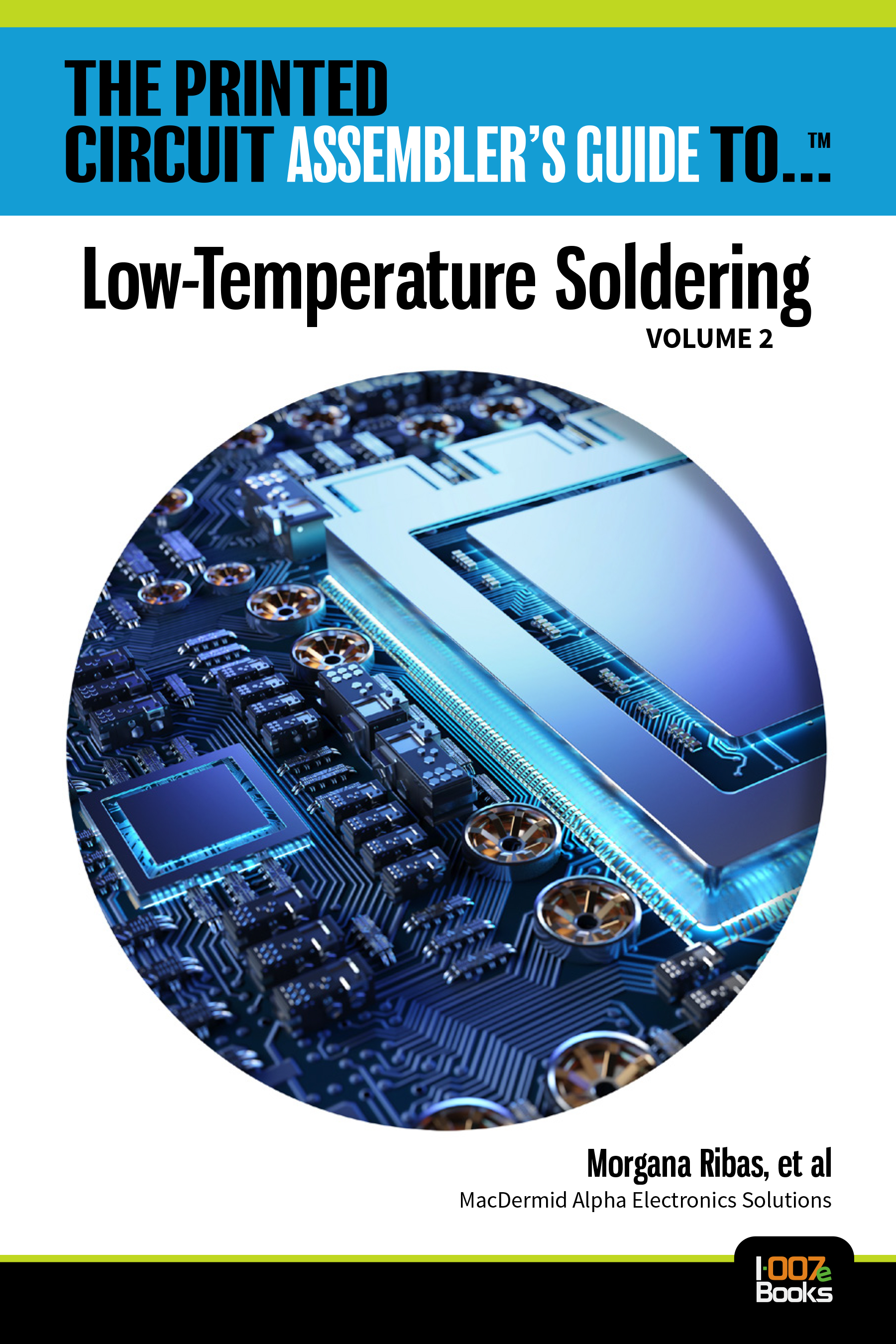-

- News
- Books
Featured Books
- pcb007 Magazine
Latest Issues
Current Issue
Fueling the Workforce Pipeline
We take a hard look at fueling the workforce pipeline, specifically at the early introduction of manufacturing concepts and business to young people in this issue of PCB007 Magazine.

Inner Layer Precision & Yields
In this issue, we examine the critical nature of building precisions into your inner layers and assessing their pass/fail status as early as possible. Whether it’s using automation to cut down on handling issues, identifying defects earlier, or replacing an old line...

Engineering Economics
The real cost to manufacture a PCB encompasses everything that goes into making the product: the materials and other value-added supplies, machine and personnel costs, and most importantly, your quality. A hard look at real costs seems wholly appropriate.
- Articles
- Columns
Search Console
- Links
- Media kit
||| MENU - pcb007 Magazine
RTW IPC APEX: HDPUG's Jack Fisher Discusses Updates on Optoelectronics Project
April 4, 2017 | Real Time with...IPCEstimated reading time: Less than a minute
Conventional copper electronic interconnect faces fundamental obstacles that prevent it from meeting increasing bandwidth demands. Optical PCB technology had been researched for several years, but significant issues remain before it can be commercialized. The HDPUG Optoelectronics project set out to demonstrate that optical waveguides incorporated within a backplane could benefit the system's interconnect topology. HDPUG facilitator Jack Fisher explains that a demonstrator has now been built and is currently under test at a number of leading OEMs.
Suggested Items
Designers Notebook: Addressing Future Challenges for Designers
02/06/2025 | Vern Solberg -- Column: Designer's NotebookThe printed circuit board is and will probably continue to be the base platform for most electronics. With the proliferation of new generations of high I/O, fine-pitch surface mount semiconductor package variations, circuit interconnect is an insignificant factor. Circuit board designers continually face challenges such as component quantity and complexity, limited surface area, and meeting the circuit board’s cost target. The printed circuit design engineer’s prominent position demands the development of efficiently manufacturable products that perform without compromise.
DesignCon 2025, Day 2: It’s All About AI
01/30/2025 | Marcy LaRont, I-Connect007It’s hard to get away from the topic of artificial intelligence, but why would you? It’s everywhere and in everything, and my time attending presentations about AI at DesignCon 2025 was well worth it. The conference’s agenda featured engaging presentations and discussions focused on the technological advancements in AI, big data centers, and memory innovations, emphasizing the critical relationship between processors and circuit boards.
Beyond Design: Electro-optical Circuit Boards
01/22/2025 | Barry Olney -- Column: Beyond DesignPredicting the role of PCB designers in 10 years is a challenge. If only I had a crystal ball. However, we know that as technology progresses, the limitations of copper PCBs are increasingly apparent, particularly regarding speed, bandwidth, and signal integrity. Innovations such as optical interconnects and photonic integrated circuits are setting the stage for the next generation of PCBs, delivering higher performance and efficiency. The future of PCB design will probably incorporate these new technologies to address the challenges of traditional copper-based designs.
Designers Notebook: Impact of Advanced Semiconductor Packaging on PCB Stackup
01/07/2025 | Vern Solberg -- Column: Designer's NotebookTo accommodate new generations of high I/O semiconductor packaging, printed circuit board fabrication technology has had to undergo significant changes in both the process methods and the criteria for base material selection and construction sequence (stackup). Many of the new high-function multi-core semiconductor package families require more terminals than their predecessors, requiring a significantly narrower terminal pitch. Interconnecting these very fine-pitch, high I/O semiconductors to the PCB is made possible by an intermediate element referred to as an interposer.
BOOK EXCERPT: The Printed Circuit Designer’s Guide to... High Performance Materials, Chapter 4
01/02/2025 | I-Connect007In Chapter 4, Michael Gay discusses the two main types of copper foil used for PCB boards today: electrodeposited (ED) foil and rolled annealed (RA) foil. He also explains the pros and cons of each, and provides an update of the latest innovations in copper foil technology.
Copyright © 2025 I-Connect007 | IPC Publishing Group Inc. All rights reserved.
Log in


